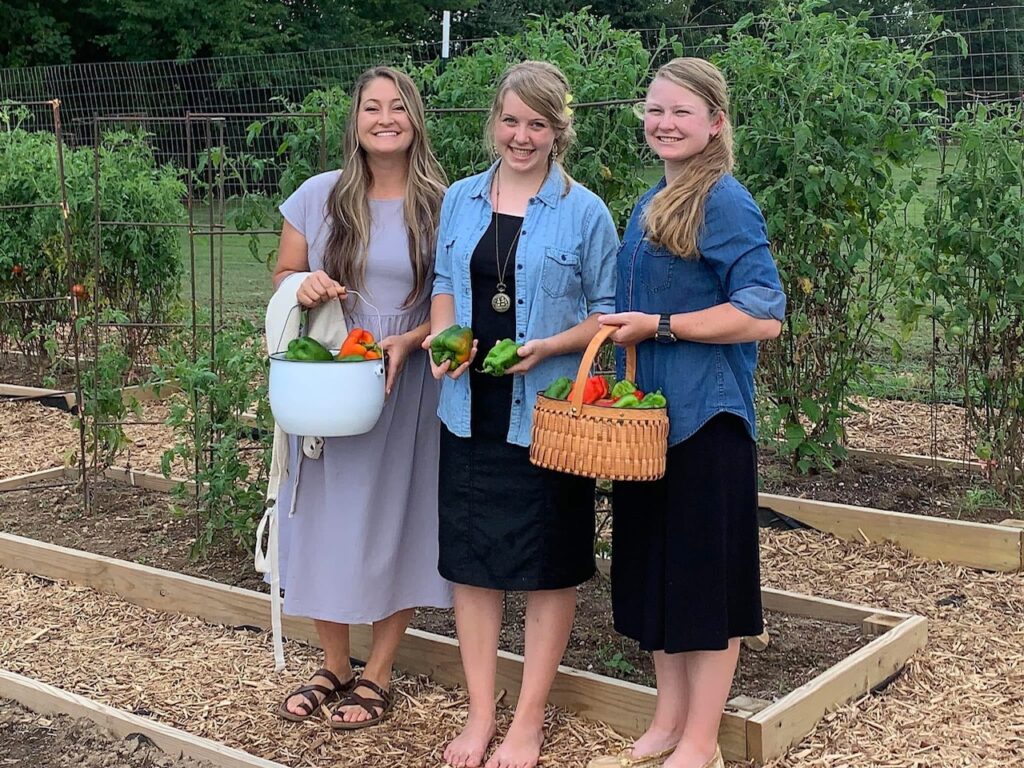
All of my grandparents were farmers, and the generations before them lived a simple life. They were frugal, hardworking, and wasted nothing.
My entire childhood, I saw my grandmother cheerfully pack full meals to take to the boys in the field. I didn’t know it then, but her ways resounded in my soul. She was highly valued in my eyes, and I was drawn in by her love for serving her family.
As far back as I can remember, I dreamt of a life that was filled with all the joys that came with quiet living. I wanted a life of practicality and a life of service in some way. So here I am, decades later, building upon my love of family and farming, and living the life I prayed for.
All because of the countenance of one woman, God used her to spark a dream that has become my reality.
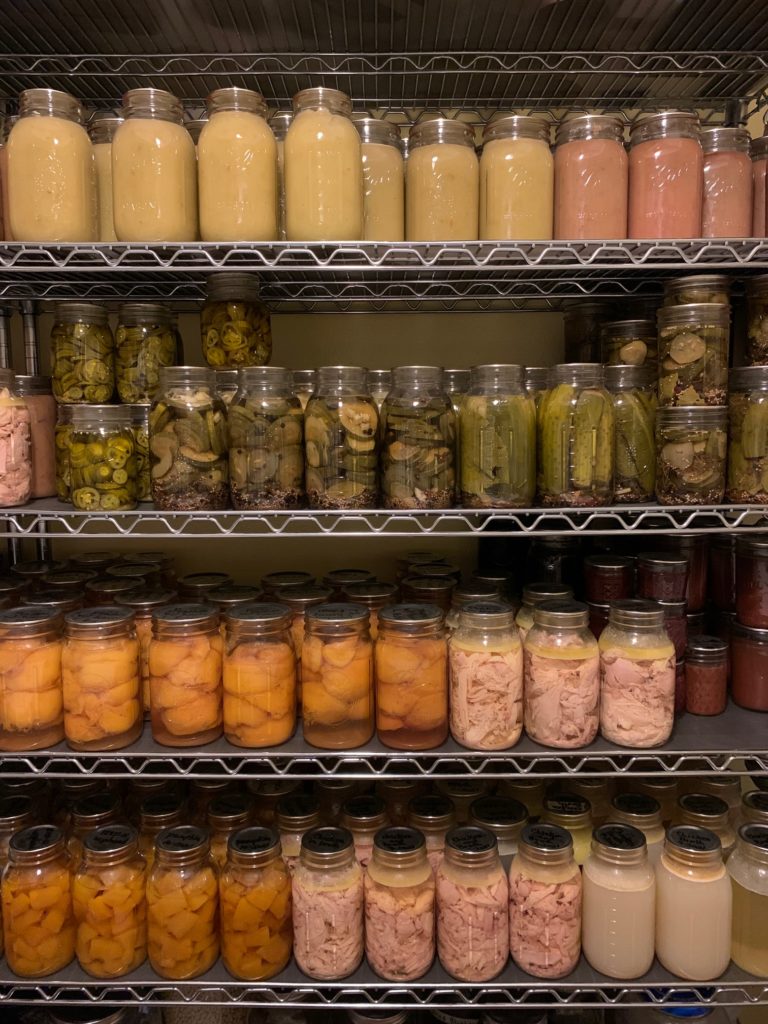
If you come visit me today, you will probably notice my working pantry. I get asked a lot of questions about this part of my life, so I decided to share a little bit about that today.
There isn’t anything special or unique about a working pantry. I view my cellar as my little mercantile so we can grab the foods we need to make delicious meals. This lifestyle is something I envisioned a lot of as a young girl, and I am very content making a house a home.
I am of Generation X, a latch key kid, and few of us grew up homesteading or farming. Some of us either have very little knowledge of how to, or don’t have an interest in that lifestyle. Betty Crocker, Little Debbie, and Oscar Mayer were who we knew best.
For many of us, home economics was not offered in school. Perhaps sports or academics were emphasized over basic living skills.
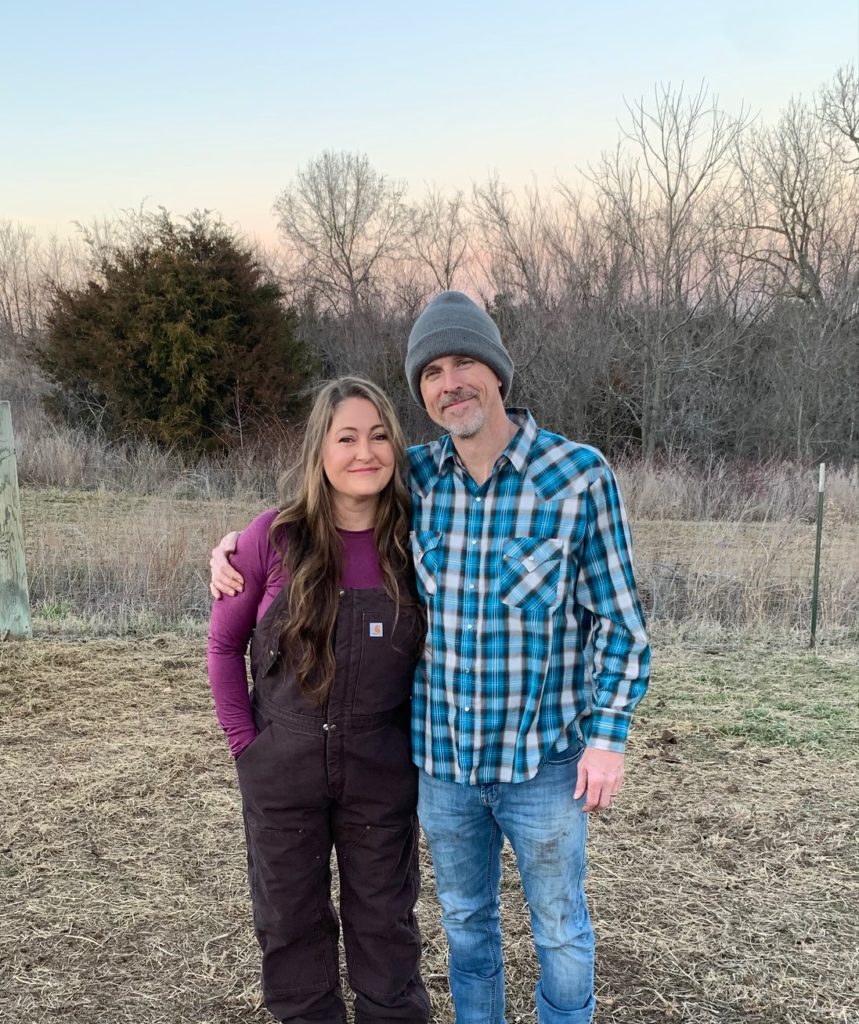
Whatever the case may be, technology and information continue to increase. We have a wealth of resources at our fingertips about homesteading, simple living, gardening, medicinal herbs, sewing, and countless other skills necessary to human survival. No other time in human history have we had such access to this information, and we really should take advantage of the opportunities whether we consider ourselves a “homesteader” or not.
Even though I grew up on my grandparents’ farm, I do have my own testimony of that learning curve. As a result, I want to mention a few things about balance and being aware of pendulum swings.
Sometimes when we grow up in a particular culture that may have had a negative impact on us, we have a tendency to reject those experiences, even at our own expense.
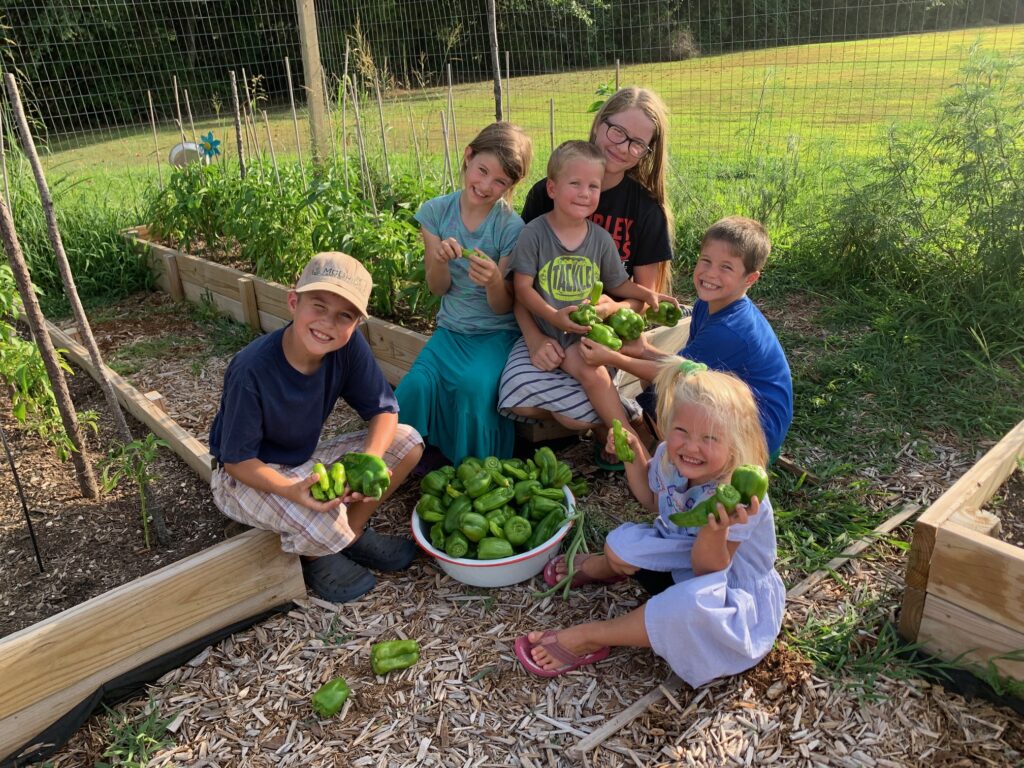
I have a friend who grew up with cold hot dogs and ding-dongs most of her childhood, and today feeds her kids 99% organic foods. As a consequence from eating poorly early on, she has an auto-immune disease she battles daily. She bends over backwards keeping heathy food on the table for her family, but is completely exhausted with worry she may not be doing enough.
On the other hand, a neighbor of mine gives little care over what to serve her family for dinner. She was born into wealth, was taught very few life skills, and academia ruled her life. She admits everything was handed to her at her request. Today, she doesn’t like that she never learned how to cook, and will still run to KFC’s drive-thru while her toddler is devouring McD’s french-fries in the back seat.
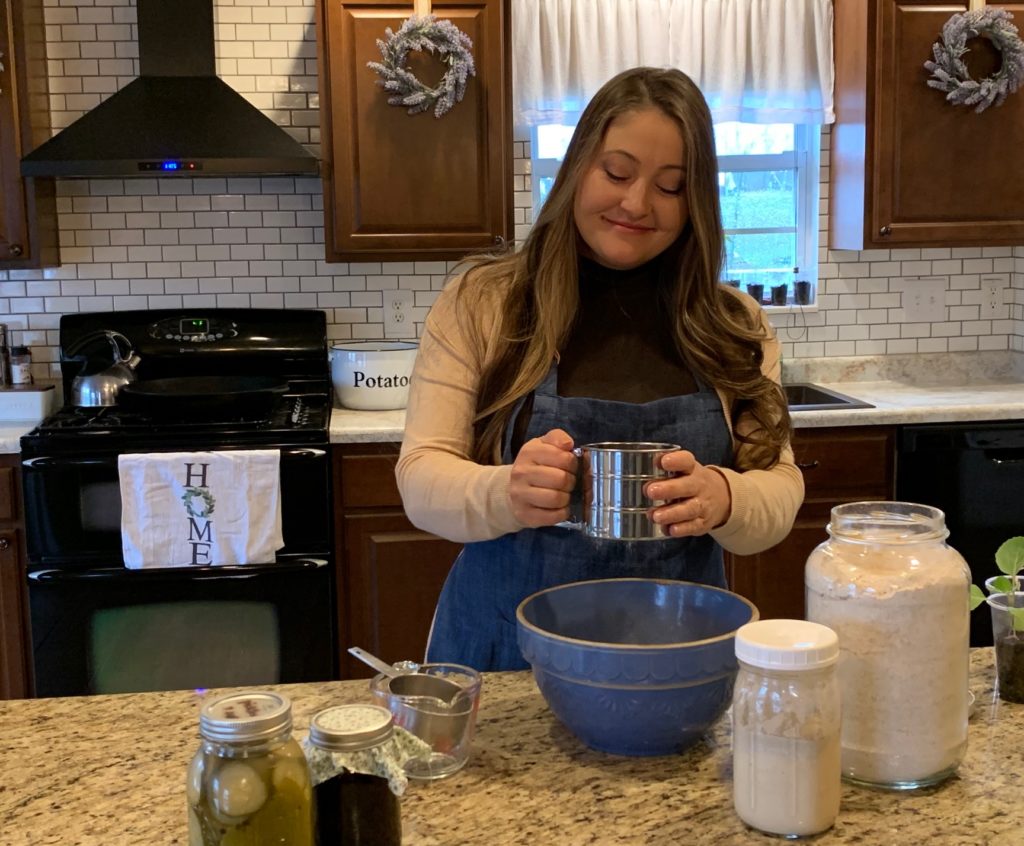
When we feel the effects of not learning basic skills, you can understand why some have the propensity to swing in the opposite direction of their upbringing.
I am hoping that if you find yourself frustrated, or even in an ungrateful place, don’t reject the positive things you have learned already. Finding yourself on the pendulum swing is not a good place to be. We need balance in our lives and that starts by being thankful in all things, no matter how small.

And as I examine some of the everyday choices I make in our home, my prayer is asking God to build upon the strengths that He has given me, help me fulfill the will He has for my family, and allow the pendulum to rest somewhere in the middle for that balance of contentment in my heart.
When I was a young mother, finding that balance was certainly a learning curve for me. I probably went to both extremes trying to find what worked, and what didn’t.
For this reason, I want to be an encouragement to anyone who desires a life well lived. We all want peace in our homes, and most mothers can find contentment in a life that is in service to their family. This takes practice.
The simplicity in what so many other cultures have done for thousands of years before the days of grocery stores makes a lot of sense to me and I want to inspire you to think outside the box. Be confident in your efforts. This too takes practice.
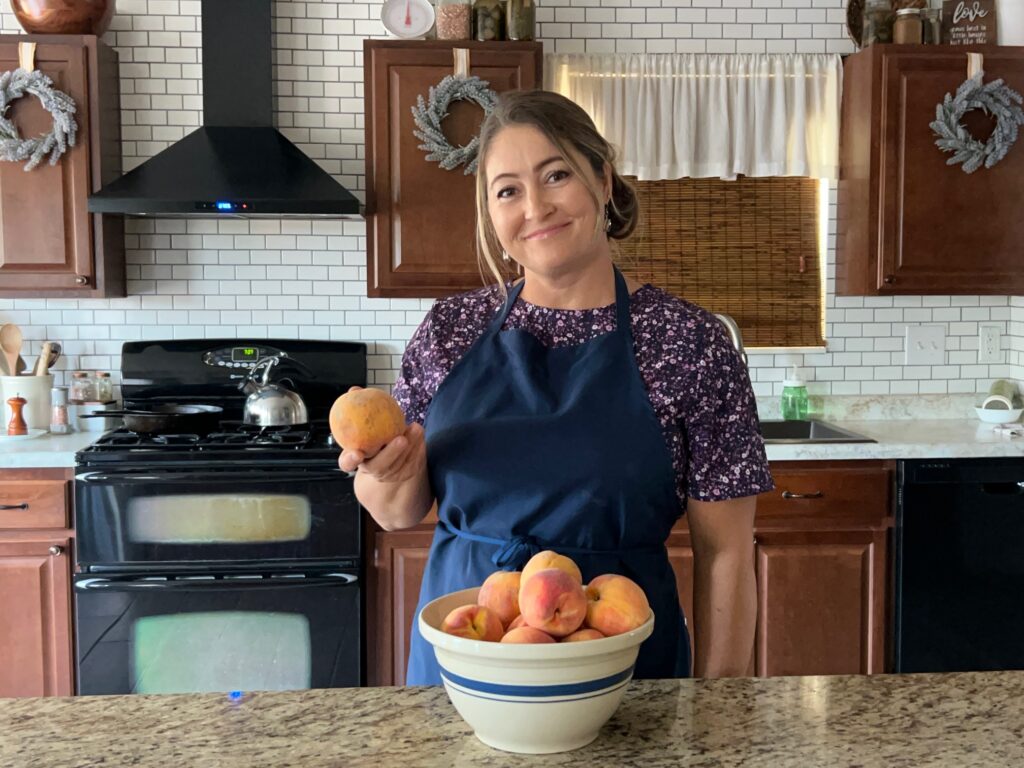
Being raised by several grandparents that experienced the depression era, their mentality had an impact on me. The positives that I learned were how to be frugal, how to manage my time well, and listening to their stories was a reminder to pass on to my children the importance of working hard at whatever they do in this life.
It’s easy to bring with you the mentality of a depression-era generation, as they have the ability to be very cynical. But because I would try to understand where they came from, it was easy to give them that grace.
I loved them very much and their perspective is understandable considering the hardship they experienced. Their stories make me very grateful to have breath in my body.
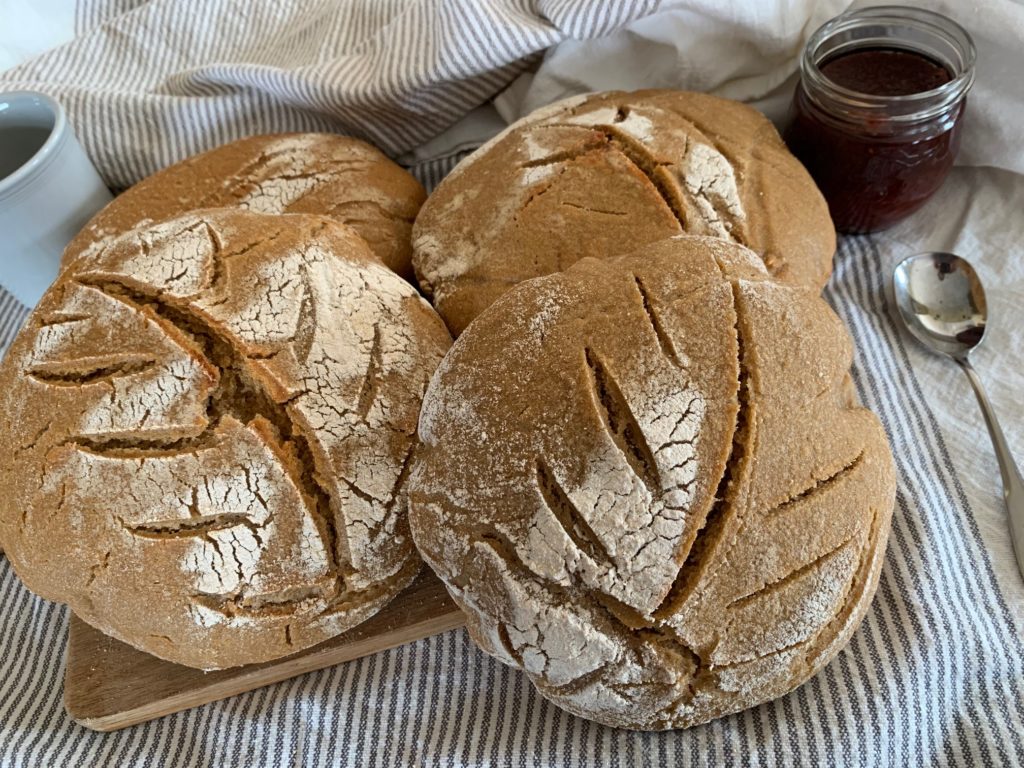
No doubt life was difficult at times, and how drafty their houses must have been. I can imagine how fearful some of those wives probably were to not be able to feed their children, or to possibly become a young widow, etc. I placed myself in their shoes as I listened to their stories.
Today, at any given point, we can buy peaches, blueberries, or lemons at the store in the middle of winter. When I grew up in the 80s, I don’t remember seeing any fresh fruit besides a few apples on the counter that my grandmother would take with her to school. How times have changed.
Determined as I am, I chose to find what I could learn from my grandparents, and now you probably see why I view a well-stocked pantry like it is money in the bank.
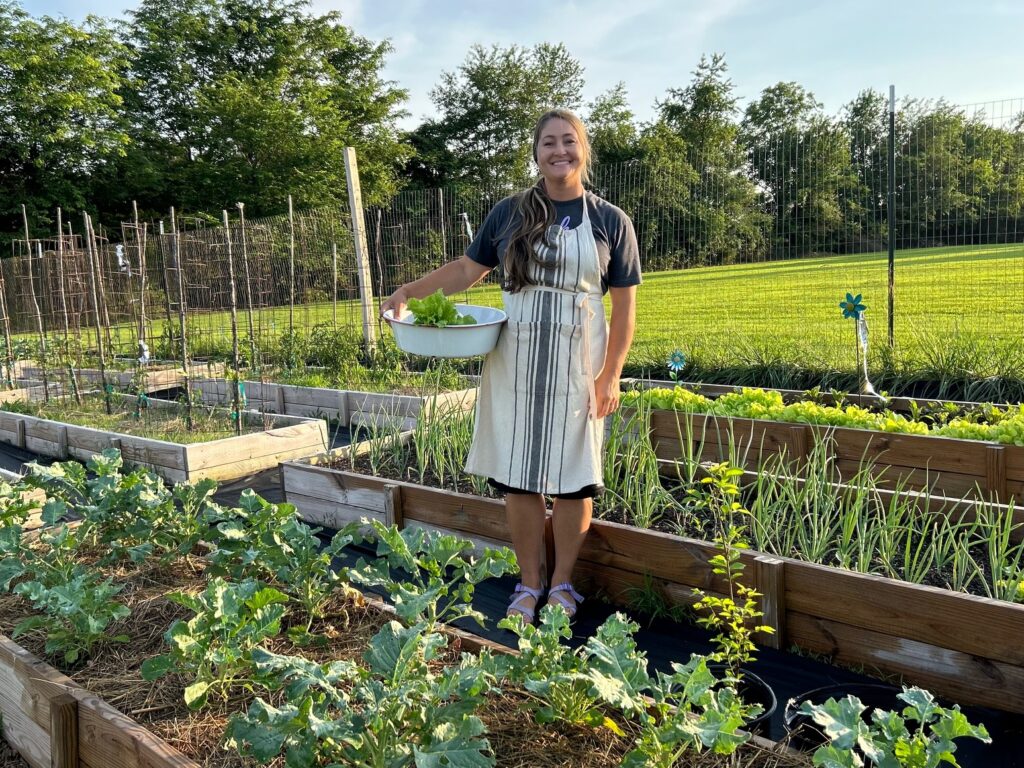
And with each new baby we add to our home, I have discovered that having basic supplies on hand is essential to my ever-changing schedule. A balanced view makes a lot of sense to me and having order in my life has been a beautiful place to live.
Our grandmothers, mothers, or school system may have not taught us traditional ways, such as gardening, cooking, sewing, canning, fermenting foods, or soaking grains, we can choose today to learn old fashioned skills in a modern-day world to pass onto the next. Don’t let your lack of skills be what stops you from learning new things. Trust me, if we can do this, you can too.
Because I get so many inquiries about where and how to start with the basics, my answer is always to start with your pantry. Buy whole foods, not packaged. Buy in bulk to save money. And grow your garden as much as possible. You don’t have to have 40 acres to grow your own food. And as always, take one day at a time learning a new skill.

Below you will find the foods you will typically see in my pantry at any given season. And because I buy seasonally for the best prices, the entire list will not all be on the shelves at once. I store away as much as I possibly can for the winter months from our own gardens. That could be from my pressure canned or water bath foods, freezing a lot of fresh fruit and meat, and dehydrating my garden veggies.
I also have added a photo of my bucket system where I store my dried goods. This is a working pantry so nothing is stored longer than 18-36 months. Again, this system is a part of how we function and it is nothing more than a mini-mercantile.
Anything I need for several months will be stored in this room. At the very least, this gives you an idea of how I have set up a system that works best for my life as a busy mom.
- Kosher salt
- Black peppercorns
- Extra virgin olive oil
- Coconut oil
- Sesame oil
- Olive Oil
- Apple cider vinegar
- Red wine vinegar
- Balsamic vinegar
- Rice vinegar

- Jam or preserves
- Ketchup
- Mayonnaise
- Whole grain mustard
- Pickles
- Worcestershire sauce
- Tamari or Liquid Aminos
- Asian fish sauce

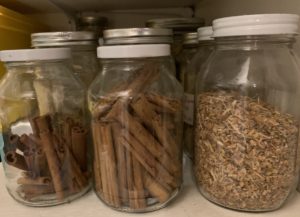
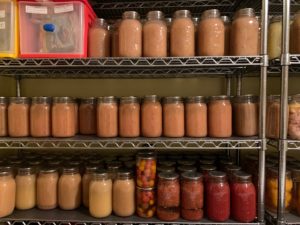
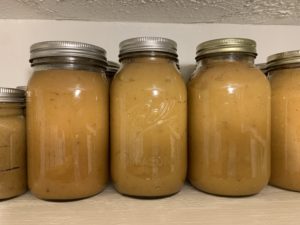
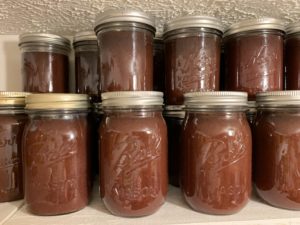
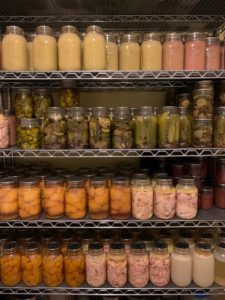
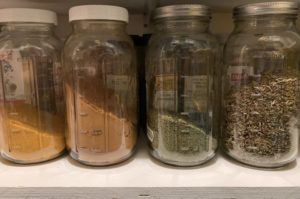
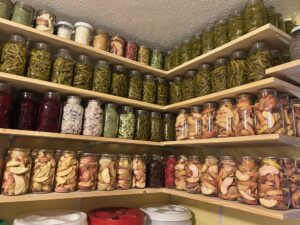
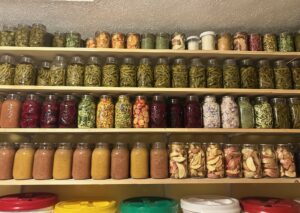
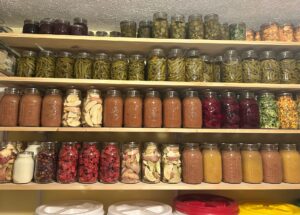
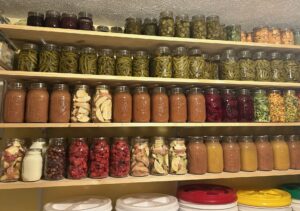
I love making fruit preserves after we pick fresh fruit in the summers. I typically make enough jam to last for the year and start preserving again in May. Applesauce is another favorite of ours. Five shelves (floor to ceiling) are dedicated to applesauce and we still run out before the year is up!
This summer we made about 90 pints of strawberry and blackberry jam, and over 300 quarts of applesauce. All of my herbs and spices go into glass jars. Depending on what it is, I use quarts and half gallon size jars for this storage.
I also love to can all the tomatoes I grow from my garden, pressure can meat, a lot of bone broth, peaches, pickles, salsa, pumpkins, squash, jalapenos, relish, green beans, and heirloom corn. All of these things can be quickly made into soups, or a meal in 15 minutes or less. I especially enjoy having the bone broth on hand because I add it to as many dishes as possible.

This is my list of the things I like to have on hand in my kitchen pantry
- Flour: whole white-wheat, spelt, red wheat, and rye
- Almond Flour
- Coconut Flour
- Baking soda
- Baking powder
- Cream of tartar
- Cocoa powder
- Chocolate chips
- Homemade vanilla extract
- Almond extract
- Homemade raspberry extract
- Maple or coconut sugar
- Maple syrup
- Honey
- Coffee
- Tea
- Crackers
- Tortillas
- Popcorn kernels
- Bay leaves
- Basil
- Cajun seasoning
- Cayenne pepper
- Celery seed
- Chili powder
- Crushed red pepper
- Curry powder
- Fennel seed
- Dill seed
- Granulated garlic
- Ground cinnamon
- Ground cloves
- Ground cumin
- Ground ginger
- Oregano
- Paprika: smoked
- Rosemary
- Sesame seeds
- Thyme
- Whole nutmeg
- Dried fruit: raisins, apricots, dates, berries, peaches, mangoes, and cherries
- Seeds: sunflower, flax, chia or hemp
- Peanut butter and almond butter
- Homemade granola
- Olives or capers
- Chiles: chipotles in adobo or pickled jalapenos
- Salsa
- Tomatoes
- Tomato paste
- Roasted red peppers
- Coconut milk
- All paper goods: plates, napkins, paper towels, solo cups, etc.
- Rolled oats
- Steel Cut oats
- Long grain brown rice
- Basmati rice
- Bulgar wheat
- Quinoa
- Kamut
- Whole White Wheat grain
- Spelt grain
- Millet grain
- Buckwheat grain
- Sorghum grain
- Whole wheat shell pasta
- Whole wheat lasagna noodles
- Gluten Free shell pasta
- Gluten Free lasagna noodles
The picture above with our baby is our bulk food order. This gets delivered at our doorstep. We purchase 50-pound bags of whole grains at a time, along with many options for obtaining multiple dry goods for the year. If we don’t grow them ourselves for preservation, then I rely on this order to fill in any gaps in our pantry. We order 1-2 times a year. We feel very blessed to have this option available to us.





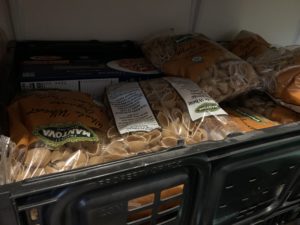
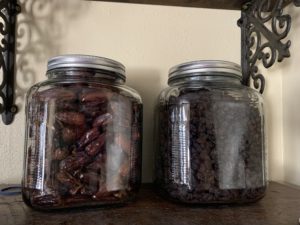
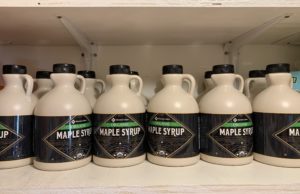
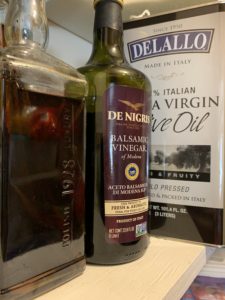
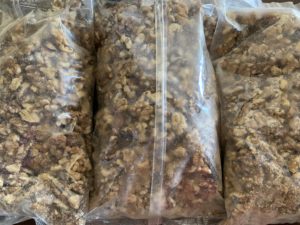

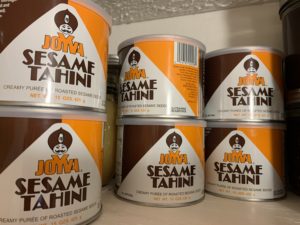

This refrigerator is typically designated for farm items, such as our eggs from the coop, raw milk from our jersey or a local friend, spelt and other grain that we grind, my starter, my ferments like yogurt and sauerkraut, and garden vegetables that we eat within the week. We keep this fridge in the “McBride Market” (which is the overflow pantry).
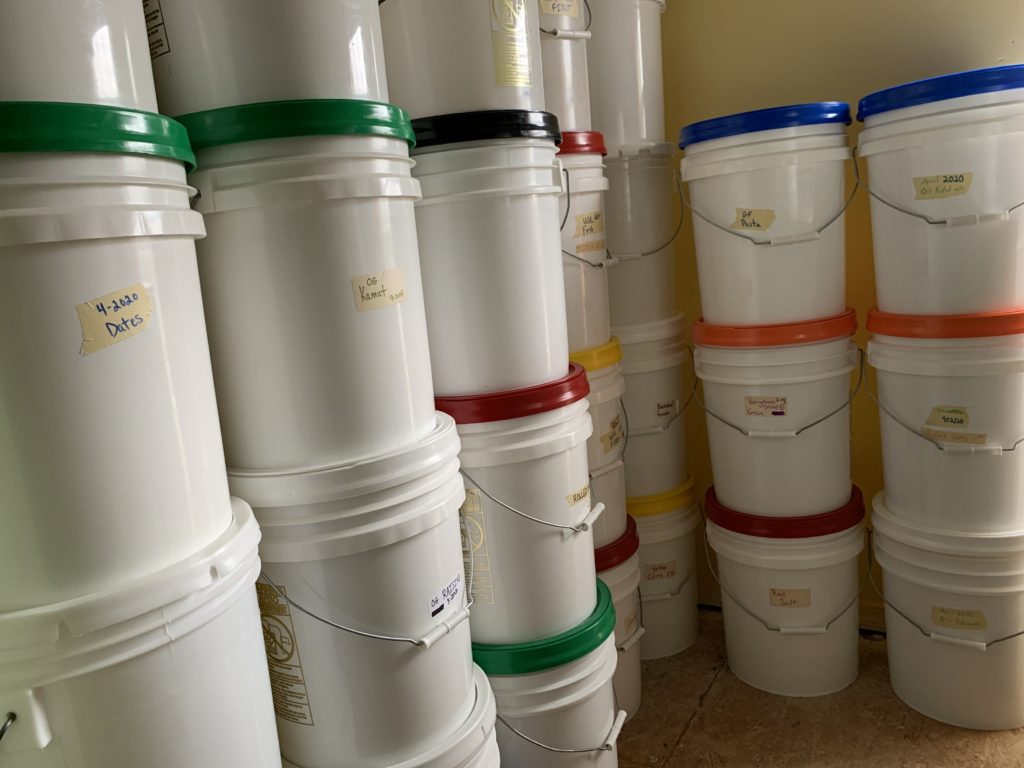
My food safe buckets have gamma seal lids on them so no air or critters can get in. I freeze the grain and dry goods for 3 days before I place them in the bucket. I do not like any weevils or unwanted bugs lurking around my pantry. I have never had food spoilage of any kind using this system.

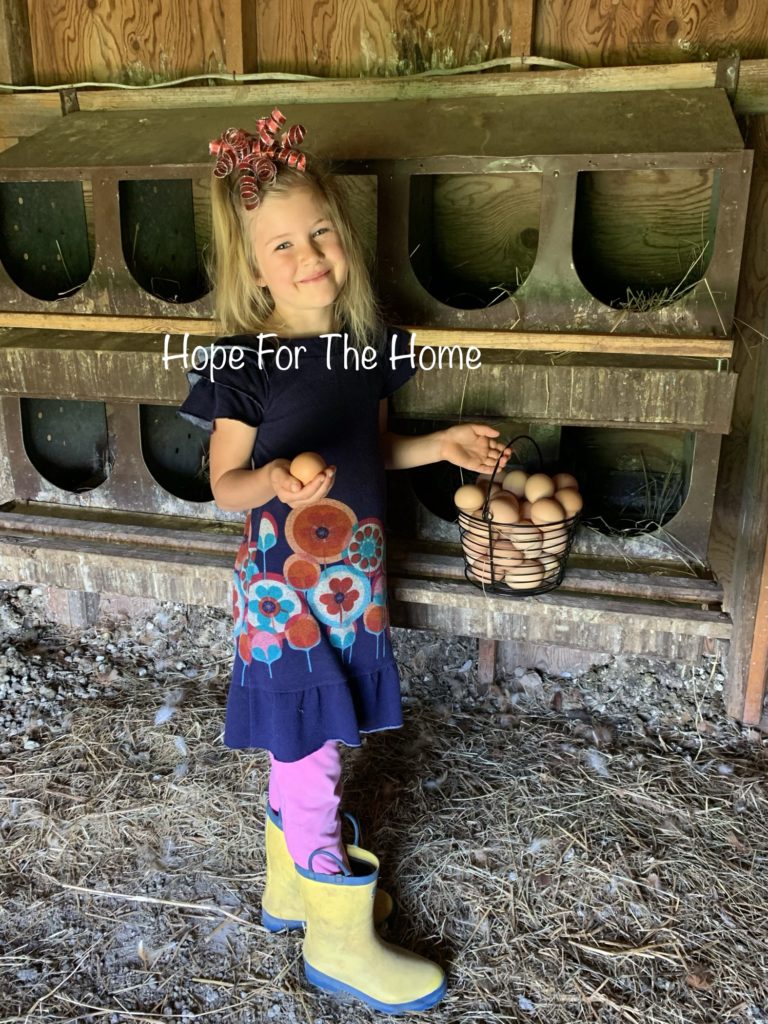
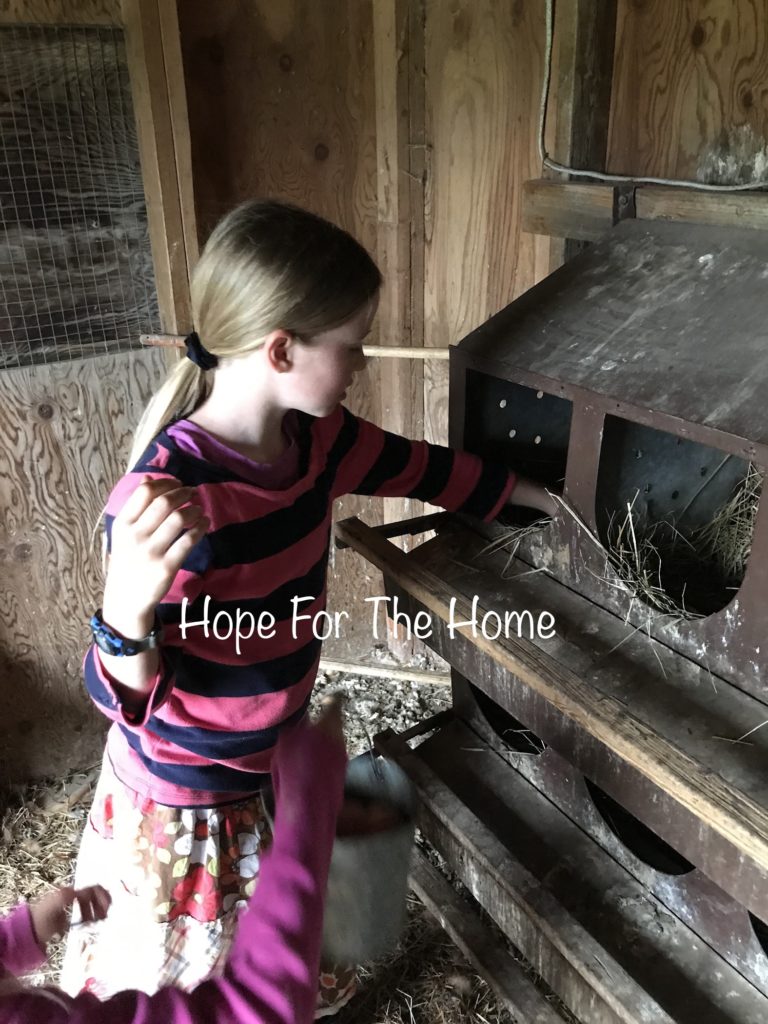
gathering eggs
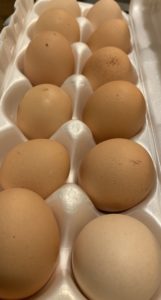

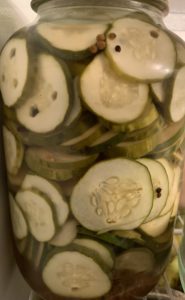
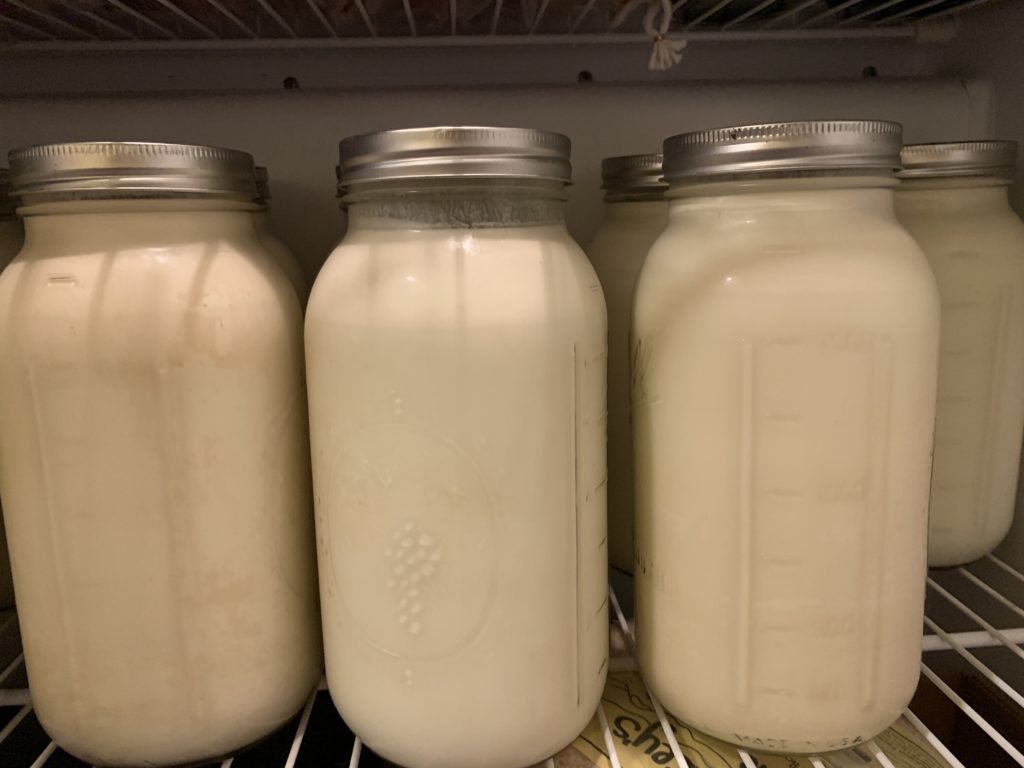

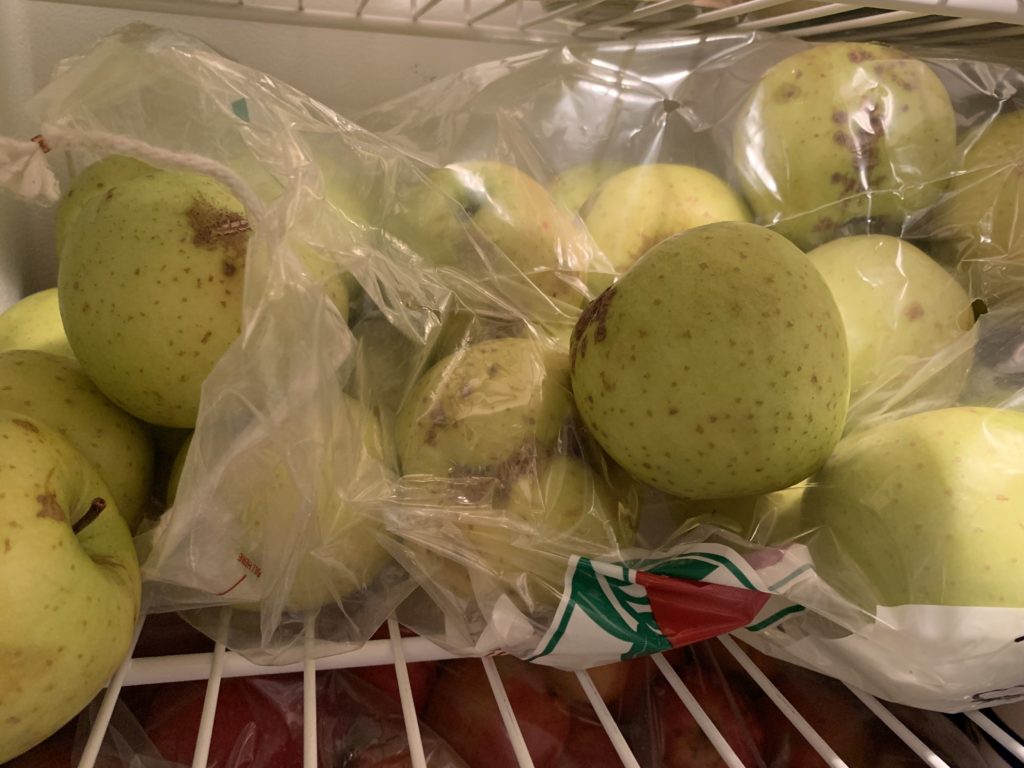
- Milk
- Homemade yogurt
- Butter
- Cheese
- Eggs: washed, dried, dated
- Ferments
- Avocados
- Carrots
- Celery
- Tomatoes
- Broccoli and cauliflower
- Bell peppers
- Leafy greens: spinach and kale
- Lettuce: romaine and mixed greens
- Parsley and cilantro
- Ginger root
- Potatoes: sweet, white, or new
- Onions
- Garlic
- Lemons
- Limes
- Apples
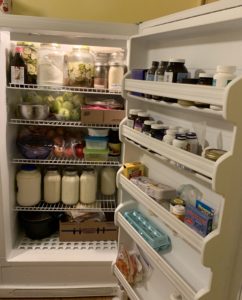
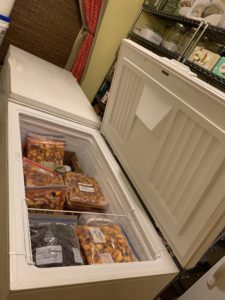
I believe a life of service is a life worth living. I pray anyone reading this finds the path the Lord has set before their feet, and to do whatever it is you are called to… and do it well. You’ll never regret creating a beautiful, balanced life with your family. Here is where you’ll find contentment. Bless you friend!
Luke 12:24
Natalie